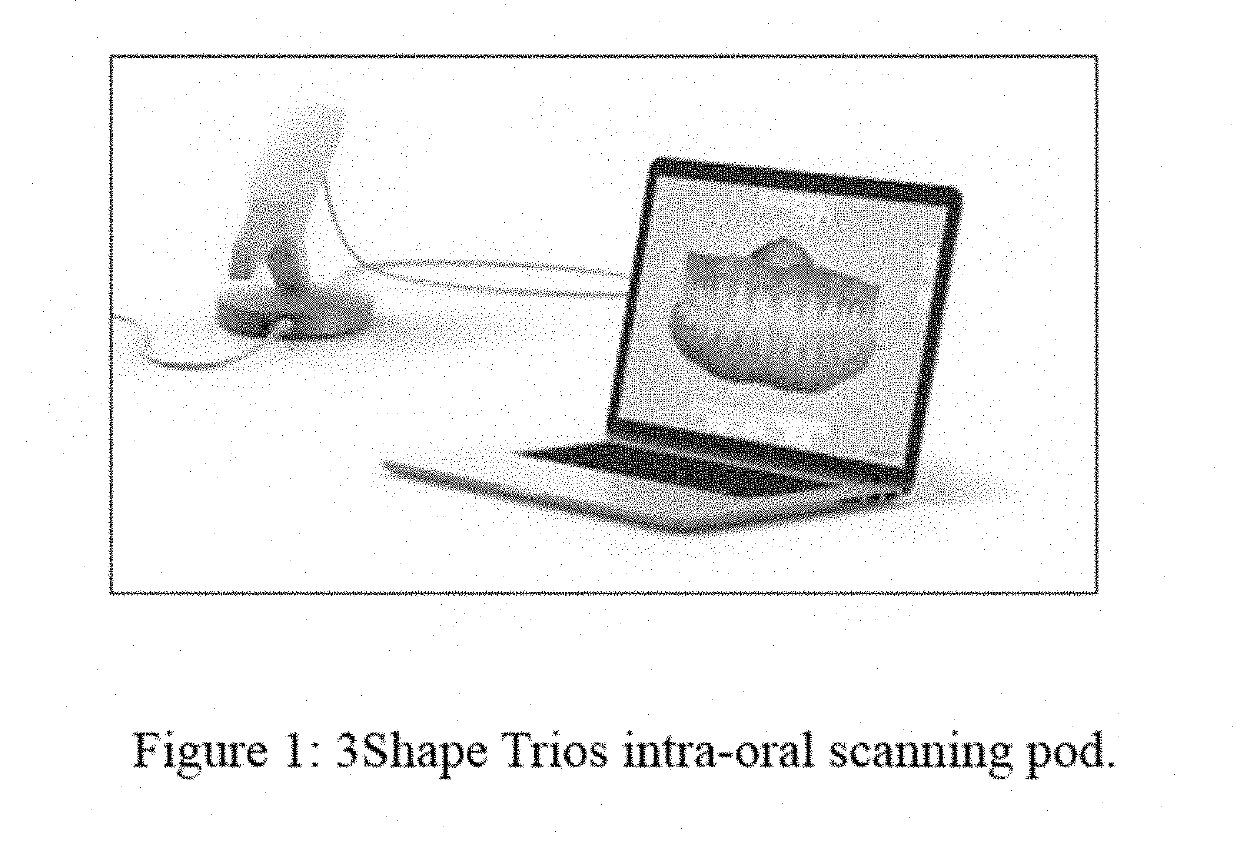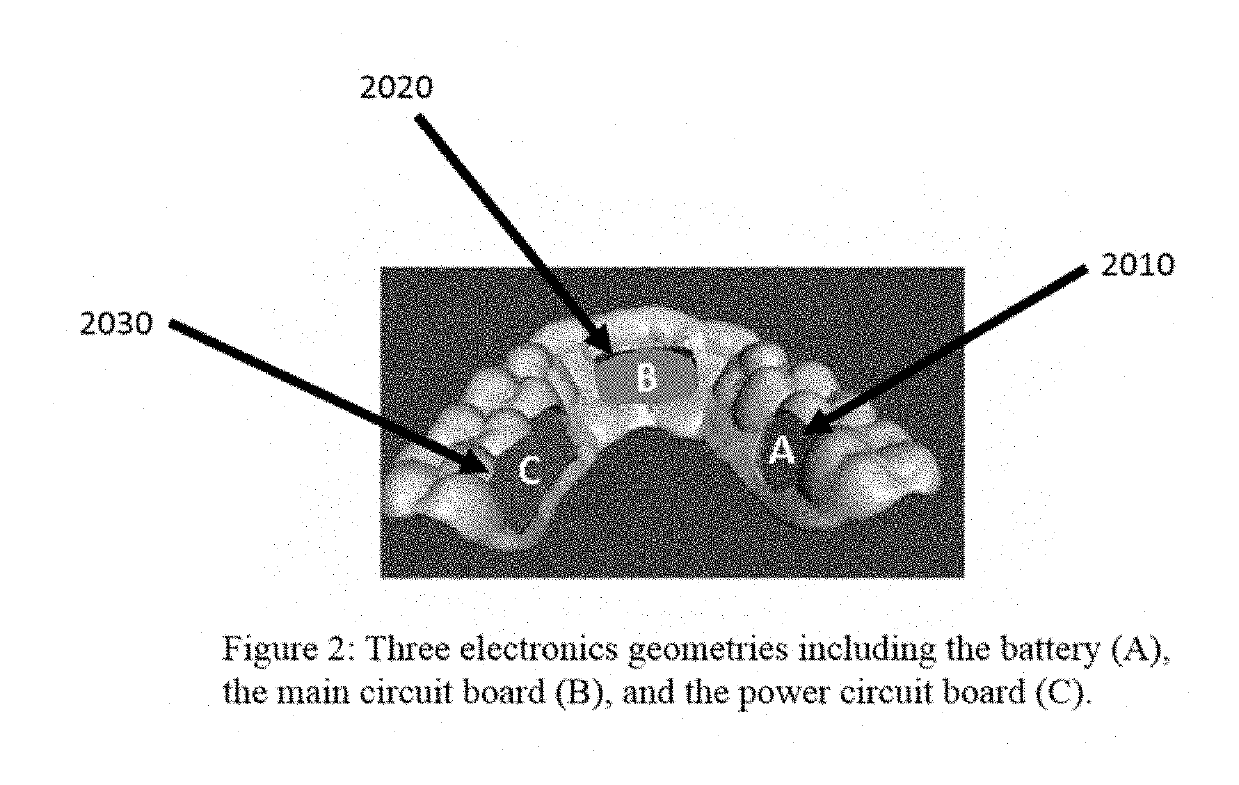Instrumented intra-oral appliance computationally designed for optimized fitting and functionality
an intraoral appliance and computational design technology, applied in the field of custom instrumented intraoral appliances, can solve the problems of reducing wearer compliance, lack of patient compliance, and reducing comfort for wearers, and achieve the effects of enhancing the location of sensors, increasing compliance, and increasing both user comfort and recording accuracy
- Summary
- Abstract
- Description
- Claims
- Application Information
AI Technical Summary
Benefits of technology
Problems solved by technology
Method used
Image
Examples
example 1
[0059]The first example comprises at least one rigid layer. Such a layer includes recesses that accept the electronics geometries (FIG. 2). In this example, the computational optimization determines, based, for example, on surface geometry of the dentition, that the battery is optimally placed between the 1st and 2nd molar on palatal surface of the left side (2010 in FIG. 2). The main circuit board is optimally placed behind the middle incisors (2020), and the power circuit board is placed on the palatal side of the 1st and 2nd molar on the right side (2030). These locations are defined as optimal by calculating the volume of material required around each component to maintain a smooth palatal surface while maintaining minimum material thickness. The appliances may be 3D printed and then cured, if necessary. Once the appliance is printed, the electronics are attached and the appliance may be custom trimmed (see FIG. 3, 3010). This device is designed such that the rigid layer is in d...
example 2
[0060]In this example (see FIG. 4), the intra-oral scan provided visual evidence of sensitivity on the gingival margin on the palatal surface of the teeth. It is computationally determined that the optimal location for the electronic components are to be bonded to the buccal surface of the rigid layer with a battery on the right side, the main circuit board in front of the middle incisors, and the power circuit board on the left (4010). The 2nd example has a layer of EVA in contact with the teeth and gingiva to mitigate irritation to diseased gingival tissue, then the rigid layer, and finally a layer of EVA is thermoformed over the top and trimmed.
example 3
[0061]In this example (see FIG. 4), it is determined that based on the user's dentition geometry having a small distance across the width of the palate and molars with larger exposed height, that comfort of the user can be optimized by a combination of electronics component selection and placement. With a small palate width, components placed on the palatal surface will interact more with the tongue and negatively influence speech. Therefore, the power circuit board is optimally placed in the same position as in the second example, on the buccal surface. The main circuit board is located on the buccal surface of the right first molar. The battery can be located as in the first and second example but being replaced with a thinner, wider battery geometry, which fits within the palatal surface of the first and second molars without interacting with the tongue due to the reduced height. (4020). Accordingly, different electronic components may be chosen, including by computer model, base...
PUM
| Property | Measurement | Unit |
|---|---|---|
| surface area | aaaaa | aaaaa |
| frequency | aaaaa | aaaaa |
| chemical | aaaaa | aaaaa |
Abstract
Description
Claims
Application Information
 Login to View More
Login to View More - R&D
- Intellectual Property
- Life Sciences
- Materials
- Tech Scout
- Unparalleled Data Quality
- Higher Quality Content
- 60% Fewer Hallucinations
Browse by: Latest US Patents, China's latest patents, Technical Efficacy Thesaurus, Application Domain, Technology Topic, Popular Technical Reports.
© 2025 PatSnap. All rights reserved.Legal|Privacy policy|Modern Slavery Act Transparency Statement|Sitemap|About US| Contact US: help@patsnap.com



